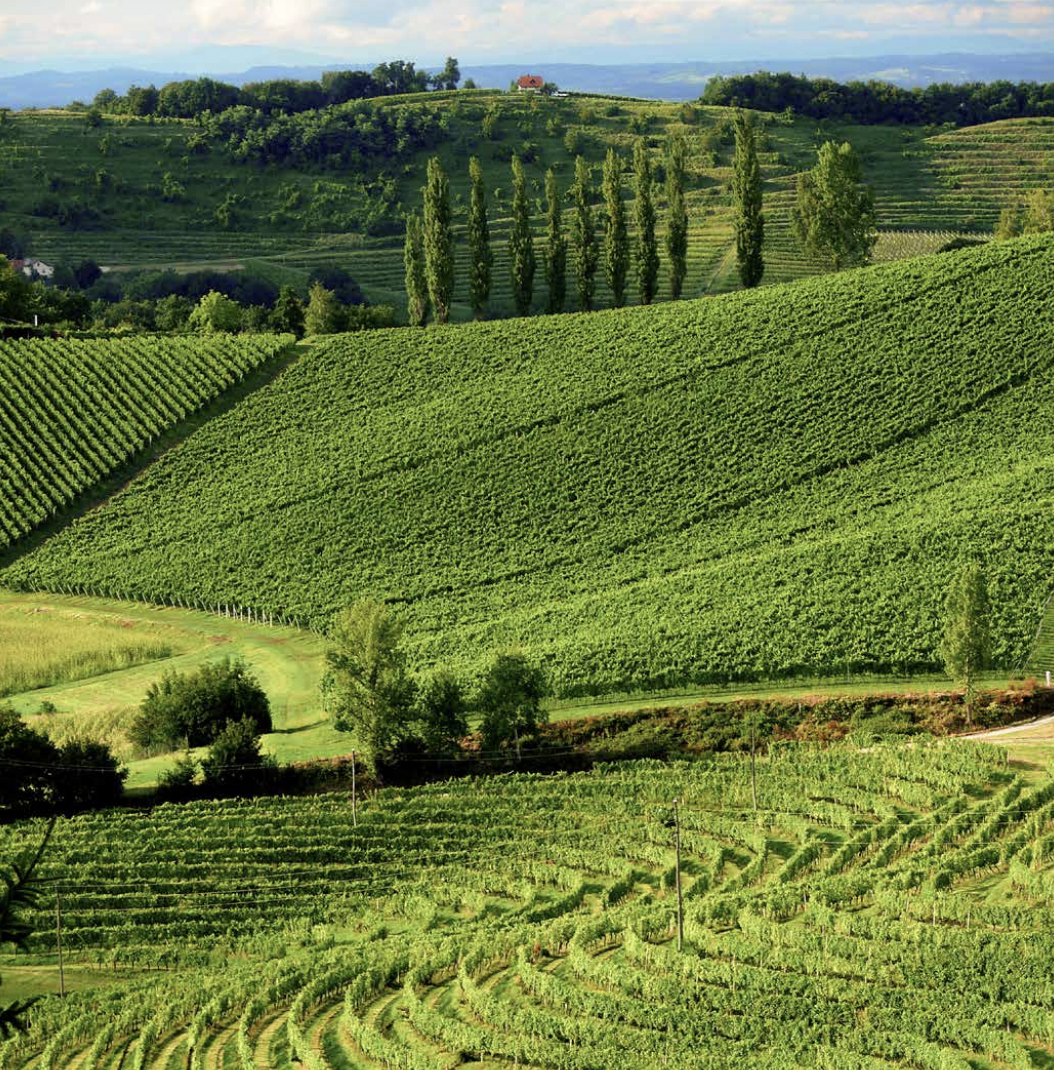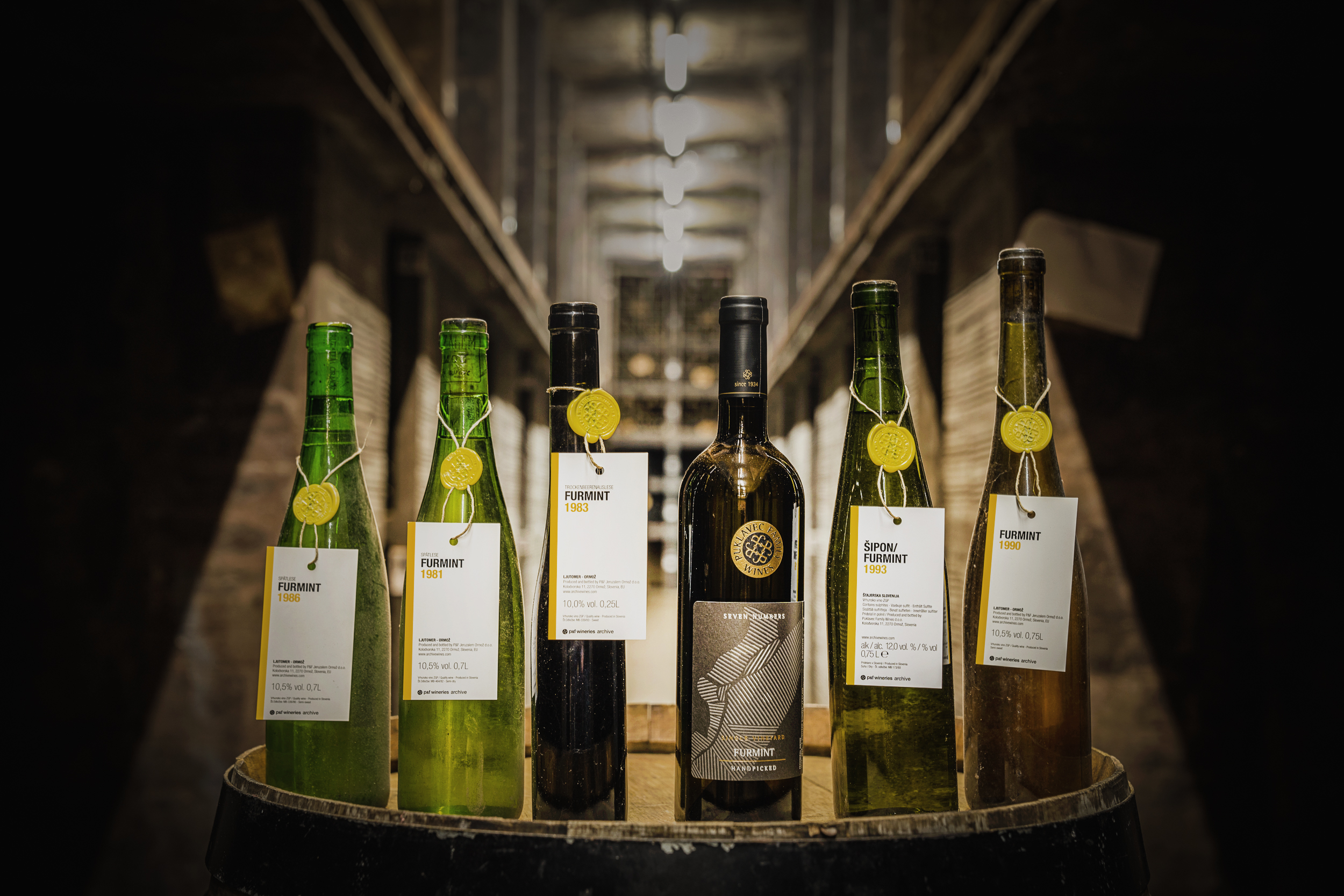This website uses cookies so that we can provide you with the best user experience possible. Cookie information is stored in your browser and performs functions such as recognising you when you return to our website and helping our team to understand which sections of the website you find most interesting and useful.
Why it’s time to embrace the ‘mother-in-law’ of grapes
It’s time for the world to embrace one central European grape – even if it behaves like your mother-in-law, according to pioneering Slovenian producer Puklavec Family Wines.

That grape is Furmint, most famously used to make the great sweet Tokaji aszú wines of Hungary, along with fine dry ones too, and it’s also a variety that has been grown for centuries in neighbouring Slovenia – where the locals call it Šipon.
According to Tatjana Puklavec, who heads up her family wine business, Furmint has so many advantages, as it can the basis of fresh, youthful whites, along with more full-bodied styles too, included barrel-fermented wines, and then intensely sweet drops, whether made with late harvest or botrytised grapes.
Key to the quality and versatility of the grape is its high level of natural acidity, making the wines from Furmint bright, as well as extremely long-lived.
“Furmint can surprise you on so many levels,” Tatjana told db during an interview this month, as the wine trade entered Furmint February – an initiative run by Wines of Hungary to celebrate the qualities of this central European grape.
Continuing she said, “Furmint can be fresh and fruity or rich and complex, but what I love is the fact that it has a really lively, vibrant acidity.”
She added, “I compare it with the mother-in-law: when we met she was a bit high in acidity, but over the years, she’s got much softer; and, when we bottle Furmint young it can be quite aggressive, then 4-5 months later, it’s a complex, floral, herbal and zingy white wine.”
But Furmint can age, soften and improve over much longer periods than that, with wines made from this distinctive grape lasting for decades – something proved by the remarkable quality, freshness and life-force found in Puklavec Furmints going back more than 50 years from its private cellar at the producer’s winery in Ljutomer-Ormož, which is located in the Slovenia’s north-eastern corner within the Podravje region, an area dubbed locally as ‘the Tuscany of the East’.
When it’s young, however, the wines have a delicacy and freshness that would appeal to the lover of Chablis, although barrel-aged Furmints would sate the drinker of fine white Burgundy from parts of the Côte de Beaune.
Indeed, the grape – which is a distant relation of Chardonnay (as well as Riesling) – is not powerfully aromatic, which is why it tends to make great oak-influence whites, and beautiful sweet wines, as well as excellent bottle-fermented sparkling.
But it’s not an easy grape to work with, being one that ripens late, leaving it susceptible to rot – which can of course be beneficial if it’s the ‘noble’ form you desire for making sweet wines.
However, with the demand from the world’s major wine markets moving away from sweeter styles, producers of Furmint are increasingly focused on realising the grape’s potential as a source of fine dry whites.
And Puklavec has made dry Furmint its specialism, working towards crafting first-rate expressions, converting to organic viticulture (with certification expected for its estate in 2023), and, of particular note, allowing the trade to buy an array of older bottles that have been stored in perfect conditions at the producer’s facility – called The Archive.
Tatjana explains, “We have a store of 250,000 bottles dating back to 1956, with the best wines from the best harvests put into our archive.” She adds, “I never met my grandfather because he died young, but I can drink his wine.”
Indeed, she says about this large library of older vintages, “When you enter the room, there is a serene atmosphere, you can sense it’s filled with the souls of past winemakers.”
And it is from the stock that I was able to try a selection of older, commercially available Furmints – see my tasting notes below.
For those in the UK trade, some of Puklavec’s historic wines will be available to taste at the Bibendum event in London next week on 1 March, along with the producer’s current releases, taking in Furmint, and Sauvignon Blanc as well as a novel and popular blend of the two.
Of particular note is the producer’s single vineyard expression called Seven Numbers, which is made with Furmint from 40 year old vines, with a brief period spent ageing in barrels to bring a richness and texture to this refreshing white.
In my view, it’s an ideal wine for the sommelier or wine buyer looking for a something of quality and versatility to enthuse the more adventurous customer who may be stuck in something of a Chardonnay rut. My thoughts on this wine, and others, can be seen below.

Puklavec Furmint, Seven Numbers, 2018
- Abv: 12.76%
- Acid: 5.55g/l
- Sugar: 3.8g/l
This 2018 vintage has a beautiful, intense lemon yellow appearance and a delicate nose, featuring aromas of orange peel, pear, a touch of coriander and cream. Although the palate has a lovely, rounded, almost oily texture to it, there’s a citrus freshness to the finish, combined with a fine chalky tannin and salty note to refresh, while the layers of flavour linger long after the wine is swallowed, and range from ripe orange to pear, beeswax to white pepper, along with a touch of coriander and wet stone too. A deliciously bright wine with richness, freshness and a hint of development. (Patrick Schmitt MW, February 2022)
Click here for more information on the Seven Numbers 2018
Puklavec Furmint, Spätlese, 1981
- Abv: 10.3%
- Acid: 8.83g/l
- Sugar: 11.6g/l
This bright golden Furmint is bursting with the aromatic characters of a fully mature white, from honey to toast, and orange syrup to polished leather, but then, when sipped, it seems to be fizzing with life, featuring lime zest and grapefruit, mixed with notes of grilled nuts, wax, mint, honey and orange. There’s a hint of sweetness, but it’s more than offset by a citrus peel tang, ensuring this wine has a long, lively, dry, cleansing finish – there’s nothing tired about this 41 year-old Furmint. Amazing. (Patrick Schmitt MW, February 2022)
Click here for more information on the 1981.
Puklavec Furmint, TBA, 1983
- Abv: 10.9%
- Acid: 10.9g/l
- Sugar: 210.5g/l
This deep amber drop features a mix of fully mature caramel-like aromatics with fresh yellow fruit, quince and dried apricot. It’s wows when drunk, with an oily, sweet, mouth-filling richness, and flavours of burnt sugar and honey, then dried fruit, followed by grilled nuts and toast, before finishing with a surprising brightness, with notes of fresh orange, even lime zest, and then a dry, finely tannic grip, making it hard not to drink. An amazing wine that begins sweet and caramelised but ends fresh, pure and citrusy. (Patrick Schmitt MW, February 2022)
Click here for more information on the 1983
Puklavec Furmint, Spätlese, 1986
- Abv: 10.6%
- Acid: 8.67g/l
- Sugar: 17.0g/l
A beautifully golden, bright wine, with inviting aged aromatics of honey, and a mature-Riesling-like petrol note, along with fresher characters of coriander and grapefruit. The palate is a delicious combination of gently sweet honey, with ripe peach and fresh lime, complemented by a smoky, toasty edge, and a salty, dry, nutty, grippy, stoney finish, that makes you salivate and crave more. A Furmint that seems much younger and livelier than its 35 years would lead you to believe. (Patrick Schmitt MW, February 2022)
Click here for more information on the 1986
Puklavec Furmint, 1990
- Abv: 10.8%
- Acid: 8.35g/l
- Sugar: 8.9g/l
A lovely deep golden appearance, with notes of orange syrup, waxy honey, shoe polish and a whiff of petrol. In the mouth, there are characters that remind one of aged Riesling, with petrol, then honey and lime, followed by a dry, chalky grip to the finish, which is persistent and cleansing, with a touch of hazelnut and wet stone eventually surfacing after you’ve swallowed this mature, lively Furmint. (Patrick Schmitt MW, February 2022)
Click here for more information on the 1990
Puklavec Furmint, 1993
- Abv: 11.6%
- Acid: 7.47g/l
- Sugar: 10.2g/l
A benchmark example of dry, aged Furmint, with its beautiful deep golden yellow appearance and mature notes of caramel, honey, smoke, and then very ripe orange, pear and lemon peel. In the mouth, the flavours begin with honey and buttered toast, hazelnut, petrol, before moving on to marmalade, pear and then tangy lime and even some fresh apple. It’s a wonderful, aged white wine with so much bright citrusy appeal, and the dry character of crushed stones on the finish. (Patrick Schmitt MW, February 2022)
Click here for more information on the 1993
Puklavec has 70 hectares of Furmint on its estate and also purchases a portion of grapes from local growers, equating to roughly 25% of its needs.
Read more

